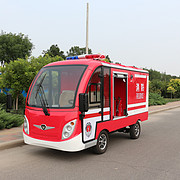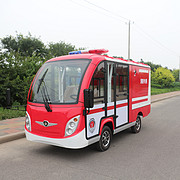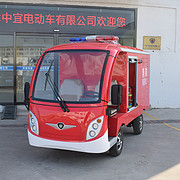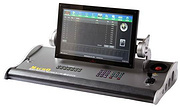
Addressing the entire spectrum of the lighting business, the co-located Strategies in Light (SIL) and The LED Show event (Feb. 28-Mar. 2, 2017) moves to Anaheim, CA and has undergone an evolution in content including the addition of the architectural lighing-focused Lightspace California event. While still delivering the latest breakthroughs in LED components and manufacturing processes and technology, the conference will address a number of solid-state lighting (SSL) applications that have been advancing over the past few years.
Interested in articles & announcements on LED-based smart lighting?
A market that once was driven by the uptake of energy-efficient lighting technology has grown beyond the ability to reduce energy and maintenance costs. As co-chair Bob Steele notes, the SIL and The LED Show audiences have also grown and matured beyond their initial silos of component manufacturer/system developer and the end-user community. "Both of these audiences are interested in the latest trends in the lighting market, emerging technologies, application economics, and, in general, the future evolution of the LED lighting industry," said Steele. As such, the content focus of both programs has been steered toward newer applications that can benefit from LED-based solutions: smart lighting, buildings, and cities; horticultural lighting; and human-centric lighting, also known as circadian lighting or more broadly, lighting for health and wellbeing.
The disruption in the lighting market by upstart movements like the Internet of Things (IoT) has motivated a significant update to the conference. Co-chair Philip Smallwood, who provides some context on the connected lighting program on p. 80, explained that the uncertainty of what smart lighting can bring to the table is what makes it so exciting and, yes, disruptive. "While lighting controls can further decrease energy consumption, the cost benefit of connecting lighting once LEDs have been installed is minimal," said Smallwood. "There are lots of questions surrounding the true benefits around smart lighting, which are more subtle and qualitative in nature. We are really looking to cover developments in the market that showcase and quantify the hidden benefits of connected lighting."
James Highgate, founder of The LED Show and co-chair of the conference, added that "We have several other industries that can add their particular technology into the lighting plot, making the illumination portion trivial." Citing data collection using SSL fixtures as the vehicle, standalone interactive smart bulbs, and value-added components such as cameras and speakers, Highgate concluded, "The lighting industry as a whole can see the writing on the wall and [is] either shifting with the times or consolidating to partner with 'outside' companies, trying to stay relevant."
Speaker Rita Renner, director of global marketing at Echelon Corporation, has delivered an interesting case study on smart outdoor lighting, citing how a smart city can be a safe city with an intelligent, adaptable LED street-light infrastructure at its core. Echelon is known for network technology that integrates sensing, monitoring, and control of machines and other electronics, and is one example of the IoT crossover between the lighting industry and information/networking technology specialists. Renner and George Denise of Oracle Corporation will present the results of outdoor smart lighting and controls projects, including the latest research on safety, at SIL.
The conference chairs agreed that the development of value-added technologies and services will continue to bring new opportunities to the LED and lighting market. Some may include data acquisition and analysis, such as that used in indoor-location services. Others may play a role based more on the experience that the light itself delivers, such as with tunable lighting technology. Tunable lighting can achieve both experiential objectives with a lighting design and human biological objectives from a scientific point of view, as you can see via an interview with Tangensys Consulting's Brent York and in a piece by Mariana Figueiro of the Lighting Research Center.
Although Steele pointed out that "all lighting is basically human-centric, unless it is for applications such as plant growth," Smallwood expanded on that thread, indicating that the interest in the latest research on using light to affect human biology over the last several years has ramped up. "The increased understanding of the effect light has on the human body is something that could further revolutionize the market. While there is a lot of unreliable information on the impact different light can have on people, once the science has progressed sufficiently and once enough case studies have been conducted, it is hoped lighting will be used to positively impact productivity, health, comfort, and safety, to name a few. It is our goal to showcase the most up-to-date science and studies and educate the industry on exactly what is known about this subject matter."
The conference chairs and advisory board continue to pursue emerging topics for the lighting community that could develop into new markets. Other notable topics at this year's conference will include technologies and applications of non-visible light (ultraviolet and infrared), LED-based horticultural lighting, and laser sources for lighting. The conference program at Strategies in Light and The LED Show will consist of four tracks: Market & Applications, Smart Lighting, Advanced Technology, and The LED Show. Visit strategiesinlight.com for more information on the conference and exhibition.
Network upgrades provide the perfect turning point for smart cities
It's no secret that telecommunications providers are retiring their 2G networks, with many of the shutdowns starting in 2017 and ending in 2019. The 2G networks were primarily used for voice traffic until the advent of IoT applications which spiked voice, video, and data traffic, taxing the bandwidth of those networks. The coming upgrade of telco networks is intended to improve performance and speed for IoT applications with regard to downloading video, streaming data from alarm solutions, sending feeds from car dash cameras, etc. However, the upgrade will not be welcomed by everyone.
Many state and local governments depend on the 2G networks as the backbone for the communication systems throughout their cities. The network upgrades will put the onus on them to upgrade their infrastructures to align with the coming 3G and 4G networks, or be left behind.
Network connectivity experts can help municipalities leverage their street-light infrastructure as their new network backbone, which can save each city hundreds of thousands of dollars compared to upgrading their systems to 3G networks. But the benefits go well beyond cost savings. A street-light infrastructure with integral connectivity and intelligence can serve as an extensible platform for easily integrating emerging IoT applications so municipal leadership can solve new challenges with new technology (http://bit.ly/1wF9ihM).
A common safety measure in practically every community is to have school beacons that flash 20 MPH when children are present. As a recent project demonstrated, even this decades-old practice offers opportunities for improvement. In this mid-sized city with just under 200,000 residents, our network connectivity experts partnered with the city's traffic department to enhance its citywide communications while avoiding a costly upgrade to a 3G network.
These illuminated signs are scheduled according to the start and release times of the school day. Based on the schedule, the signs start flashing 30 minutes before school starts and flash again for 30 minutes after school ends each day. If the school superintendent wanted to change the schedule because of an early dismissal, for example, they would have to file a request with the traffic department. This is where the complexity and delays really emerged. Half of the school beacons in the city ran on a 2G network; a schedule change required traffic department personnel to reprogram the schedule for specific beacons in each school zone. The remaining 50% of the city's school beacons were controlled by clocks embedded in the signs; a schedule change for these locations required traffic department personnel to manually reschedule each clock. With about 100 schools, such a seemingly simple task would take the city traffic department about a week to complete. If a snow storm dictated an early dismissal, without one week's notice to change the schedules, the beacons would remain on the existing schedule. This became a public safety issue because students would cross streets without the additional protection of the school beacons in already reduced visibility. Conversely, lights would flash even when schools were closed and no students were in the vicinity, causing a "cry wolf" syndrome resulting in drivers eventually ignoring the caution lights.
With flexible, next-generation, intelligent control technology, the project team helped the city replace its communications network across the school beacon system, utilizing a platform compatible with LED street lighting. Now schedule changes take just a few minutes as compared to the full week it used to take with the old system. And not only can the public school system now work closely with the traffic department to customize schedules more accurately, the city can also leverage this network to bring distributed intelligent control to LED street lighting.
Leveraging these types of public infrastructures as communications networks also enables city officials to instantly adjust rectangular rapid flashing beacons (RRFB) warning drivers of situations such as "Police Officer Ahead," "Race Route. Check for Cyclists," or real-time speed notifications. By implementing this solution, the city saved between $1,300 and 1,800 per school in new hardware costs which would have been required to upgrade to a 3G network.
The city's new adaptable, intelligent infrastructure allows administrators to make more informed decisions based on data analytics, such as data from crosswalk buttons. For example, if a button is pressed a certain number of times every day at 3:00 pm, traffic managers can decide to operate the beacons in those locations continuously every day from 2:55-3:05 pm.
The extensible infrastructure will also let the city easily and cost-effectively add future IoT capabilities such as smart parking capabilities for drivers seeking priority parking, such as disabled parking spots or plug-in electric vehicle charging stations, and re-routing traffic with smart signage when accidents or other events occur. One day, this type of responsive infrastructure could even be used to offer assistance to first responders by linking streetlights and crosswalk beacons to 911 calls. Now that's a smart city! - Rita Renner, LEED, GA, Echelon Corporation
Light and health: What do we know about the science?
The daily pattern of light and dark falling on our retinas regulates our bodily processes and behavior by setting the timing of the brain's biological clock, which regulates our circadian rhythms (i.e., physiological functions that run on approximate 24-hour cycles). The biological clock regulates our sleep-wake cycles, changes in core body temperature, and the secretion of hormones, to name just a few.
Exposure to the wrong spectrum of light at the wrong time of day, such as short-wavelength (blue) light at night when we are preparing to sleep, disrupts the circadian system and can lead to adverse effects such as poor nighttime sleep, daytime sleepiness, depression, diabetes, cardiovascular disease, and cancer.
Our modern built environment and frenetic 24-hour lifestyle are well equipped for circadian disruption. The electric lighting used in today's modern buildings has been manufactured, designed, and specified to meet requirements of our visual systems - not our circadian systems - and typically delivers ill-timed, inappropriate levels and spectra of light for maintaining circadian health. We may be getting too little circadian effective light during the day and too much in the evenings.
Rensselaer Polytechnic Institute's Lighting Research Center (LRC) has established that optimizing light exposure for circadian health is crucially dependent on the quantity, spectrum, timing, and duration of that light exposure.
Our research with day-shift office workers has shown that receiving appropriately timed, high levels of circadian-effective light in the workplace can improve sleep quality, promote entrainment to the solar day, and relieve depression. Translating that increase in alertness into better performance is still tricky, however, because performance is affected by many other things that are unrelated to light exposures. Similar approaches have also been employed to improve sleep health in adolescents with delayed sleep disorder and to mitigate the symptoms of Alzheimer's disease in older adults. In fact, the science is clear when it comes to Alzheimer's disease patients. Circadian-effective light during the day will improve sleep quality, relieve depression, and reduce agitation in this population.
But it is not just about blue light. Our research with rotating-shift healthcare workers, for example, has demonstrated that red light, which does not suppress the hormone melatonin, can increase alertness and reduce sleepiness in those forced to stay awake when the body is telling them to go to bed.
Even if a particular building provides ideal circadian-effective lighting, either in the form of daylight or spectrally tuned lighting, exposure to the wrong kind of light after leaving the office can still lead to circadian disruption. Lighting at home is just as important and should not be neglected. For this reason, personalized, portable, dynamic plug-in lighting products can provide an effective solution, although these types of devices are not yet widely available. The work environment might still be, however, where we have the greatest opportunity to receive the entraining light we need on a daily basis, especially in winter months, when some of us go to and return from work in darkness.
Circadian wellbeing depends upon one's history of light exposure over 24 hours, not just the light received in the workplace. Therefore, future research will be needed to characterize total light exposures experienced by the individuals during their waking hours. In the meantime, the successful application of light is more likely to occur in more-controlled environments, such as assisted living facilities and nursing homes.
Lighting for the circadian system employs lighting design objectives that differ from those typically used in traditional architectural lighting design, and therefore, requires metrics that differ from those currently used by lighting designers. We have developed a new way of quantifying light's impact on the circadian system, called circadian stimulus (CS), and a CS calculator to help lighting professionals select light sources and light levels that will increase the potential for circadian-effective light exposure in buildings. Other metrics, such as melanopic lux, have been proposed, but further research needs to validate these metrics in the field.
To help designers implement some of these solutions, the LRC is also developing lighting patterns, available online, that will serve as tools for designers to learn how to implement lighting schemes that promote circadian entrainment in the built environment. Each lighting pattern shows the base case along with the new lighting design that is being analyzed for CS.
Not knowing all of the answers shouldn't stop us from designing and implementing new lighting solutions targeted to deliver circadian-effective light to the built environment. While claims for improved performance cannot be made yet, no one can refute the idea that light isn't just for vision. The design of our living spaces, therefore, shouldn't be just for vision either. - Mariana Figueiro, program director, LRC, and professor at Rensselaer Polytechnic Institute
How will spatial tuning of light enrich SSL for the built environment?
The application of advanced optical techniques is opening up opportunities for the development of new LED luminaire designs that will enhance the lighting environment in our offices, shops, schools, and commercial and industrial facilities. To provide a perspective on some of these new possibilities, SIL will be offering a session entitled "Enhancing the Built Environment with Advanced Luminaire Design."
The lead speaker in this session will be Brent York, CEO and founder of Tangenesys Consulting. He has over three decades as a professional in the lighting industry with expertise in innovation, technology development, business strategy, and intellectual property (IP). Bob Steele interviewed York regarding the possibilities for light-shaping or spatial tuning technologies to impact the SSL market.
Bob Steele: Why is spatial tuning of light important?
Brent York: Spatial light tuning in its simplest form is a change in the angular relationships and balance of direct and indirect light in our environment. It is commonly witnessed as a natural phenomenon during a typical day, with changes in the angle of the Sun and the variable balance of direct to indirect lighting. Spatial light tuning is so fundamental to our experience of space that it has pervaded our language. It's what we have experienced for millennia in nature and the words that we use to describe illumination, including adjectives such as dappled, incandescent, luminous, radiant, gloomy, flat, and soft. Spatial light tuning affects more than our emotional connection with the space; it also influences our behavior, social interactions, and performance within the space. Today we stand on the threshold of being able to include spatial tuning in our everyday illuminated environment.
Steele: In the past, were lighting designers and architects able to use conventional light sources such as incandescent and fluorescent lamps to create spatial tuning of light, and if so, how did they accomplish it?
York: If we go back a hundred years when we brought electric light into interior environments, we initially struggled to create enough light and the challenges were primarily task oriented, or simply, how do we get enough light to the task? It wasn't until the 1950s and 1960s when lighting designers started to look at the aesthetic and functional perception of the space and how it could be modified by adjusting layers of light. While this was usually reserved for the most iconic of architectural spaces, and usually in a static setting, most people's experience with spatial light tuning comes from the theater. On a stage, the lighting designer attempts to create changeable environments and uses light to accompany the action on the stage to help tell the story. Spotlights, floods, reflective scrims, and many different materials are used with dimming control boards to switch dynamically between scenes in support of what is happening onstage. In essence, the manipulation of the illuminated environment on the stage employs all three tools - dimming, color tuning, and spatial tuning. Not surprisingly, bringing this technology to other applications is economically challenging for environments such as restaurants, homes, retail establishments, and offices.
Dynamic spatial tuning requires new lighting tools to actively modify light sources and gain control over illumination patterns. More specifically, shaping the light and illuminating surfaces and spaces requires an integrated solution of controls, compact light sources such as LEDs, and advanced optics. We've simply lacked the main ingredients in terms of light source scale and system economics to add the active spatial tuning component - until now.
Steele: What new possibilities are LED sources and advanced optics providing to create spatial tuning of light in the built environment?
York: There are two key attributes that LEDs have brought to us to enable spatial tuning to become a reality. The first and most important is that LEDs have increased in performance and decreased in cost. Haitz's Law is alive and well and has enabled us to break from the one lamp, one fixture, one function mindset and potentially use groups of independently controllable LEDs within a single fixture. Since the economics of adding more LEDs sits low in the bill of materials, it is possible to design fixtures with groups of LEDs with independent optical systems controlled by an intelligent drive system that can be switched seamlessly to create completely different photometric distributions. The lighting fixture can then effortlessly morph to suit the photometric requirements.
The second attribute of LEDs is their physical scale and growth in light flux density. As LED packages have shrunk from several millimeters down to single-die devices below 1 mm2, it follows that the optical systems can also shrink dramatically. This allows fixture designs to shed weight and volume in ways that permit us to rethink where a lighting fixture can be located and how much material is needed. Furthermore, new families of compact optical technologies employing spatially tuned waveguides and even active optics are opening up new opportunities for the solid-state manipulation of light at a scale that is unprecedented. With a dose of intelligent control responding to smart sensors and "biometrically enabled" occupants, it isn't hard to imagine what our next generation of lighting may become. Light and lighting will become "plastic" in the sense that it is electronically tuned in new ways. This will open up opportunities for lighting to be contextually aware and supportive of human activities, whether it be concentrating on a task, making a buying decision, or enjoying a quiet conversation over dinner.
Steele: How do you see the capabilities for spatial light tuning evolving in the coming years?
York: As the title of the talk that I will be giving at SIL suggests, the future holds some very interesting possibilities for us in terms of spatial light tuning. In essence, the statement that spatial light tuning is "the last mile" in the control of light means that the mastery of dimming, the mastery of color tuning, plus a newfound mastery over spatial tuning gives us the ability to reproduce some of what we experience in nature. But it also goes further since it also enables new opportunities for lighting to be fully supportive of human activity. So, where are we going to go? I believe that we will eventually start seeing spatial tuned luminaires become commonplace as they shrink in size and cost. It will be part of the fabric of architecture. As we inhabit certain spaces, the lighting and sensing systems will blend into the built environment, and adjust based upon what the system learns about its influence on users.
Retailers will love the increased sales on goods as they serve up personalized experiences to shoppers, and they in turn will prefer the dramatic interactive component of the experience that they can only get at a store. Office workers, far from the influence of natural light in the core of office buildings, will benefit from spatially tuned light that morphs through the day as it emulates both the color and spatially changing distribution of natural light. Residential users will value lighting that supports an increasingly multifunctional use of space. - Bob Steele, co-chair, Strategies in Light









Service Hotline
Work Time:Mon-Fri 9:00-18:00
UTC+8

Sinoexpo Digital Platform
Copyright 2006-2025 Shanghai Sinoexpo Informa Markets International Exhibition Co., Ltd. All rights reserved
沪ICP备05034851号-77
 沪公网安备 31010402000543号
沪公网安备 31010402000543号